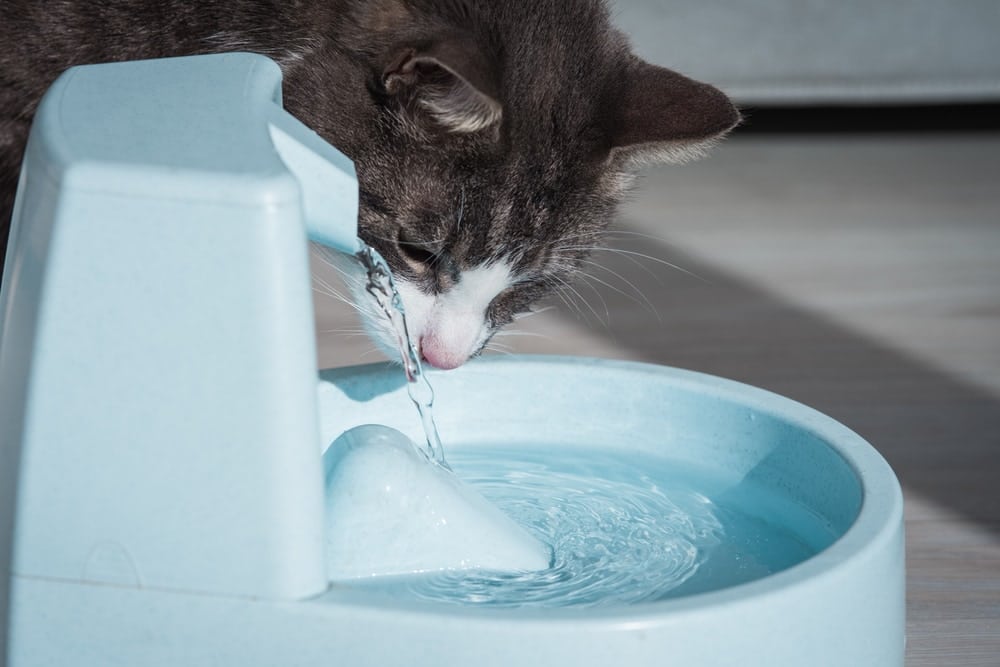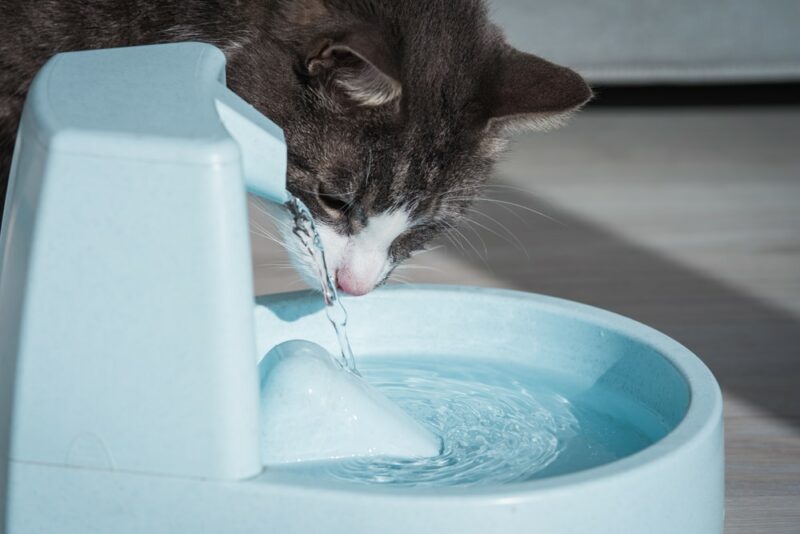Click to Skip Ahead
Cat water fountains are unique tools that can help cats stay hydrated. Cat water fountains are known to draw your cat’s attention, as they are specifically made to appeal to our feline companions. Since cats instinctively search for moving water, these fountains are an ideal addition to any home. However, as with any product, cat water fountains have their benefits and drawbacks.
If you’d like to learn all the pros and cons of having a cat water fountain, read the article below.
Pros of Cat Water Fountains
1. More Appealing for Cats
Cats guardians often worry about their cats getting dehydrated, as they don’t make a habit of drinking water regularly. You can also find your cat drinking water from any other source besides the designated water bowl. Water bowls are generally uninteresting and unappealing for cats, so keeping them entertained might improve their overall hydration habits.
Water fountains appeal to cats for several reasons, especially the dynamic and fun water flow, which keeps them engaged. This effect of flowing water is much more fun for your cat, drawing it to drink water more frequently. In the wild flowing water is often equated with cleaner water.
2. More Water Storing Capacity
Cat water fountains are an excellent way to store more water for your cat while avoiding the usage of unnecessarily large water bowls. Using large water bowls can make access difficult for your cat, plus it becomes tedious and repetitive to replenish these large water bowls every day.
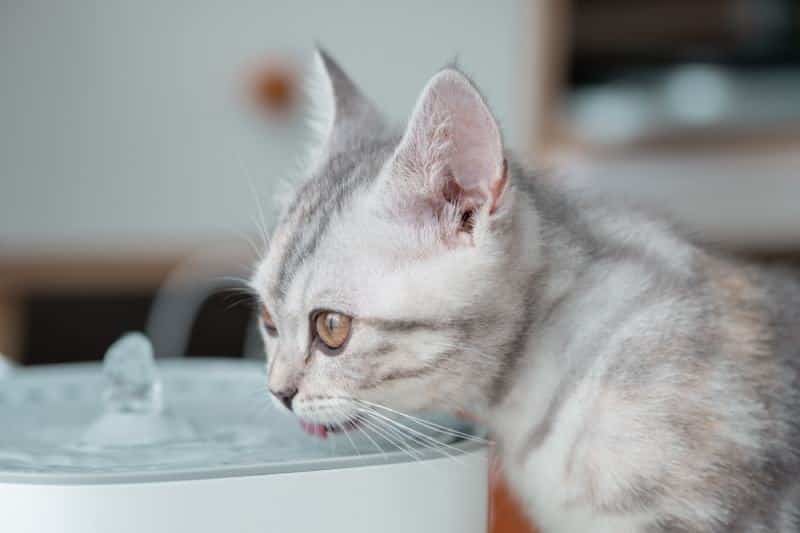
3. Cats Prefer Running Water
Although some cats love drinking water out of bowls, some tend to be quite picky regarding their water source. Domesticated cats come from wild cats, and in the wild, they tend to drink only from moving sources of fresh water. Running water is instinctively fresher and healthier in their minds.
Installing a water fountain in your home will be an excellent way to ensure your cat drinks more water because they think water fountains are a safer and more reliable water source 1.
Making sure your cat drinks enough water can require a little creativity and the right fountain choice! A nicely made product like Hepper's Stainless Steel Cat Water Fountain will encourage your cat to stay hydrated by providing fresh, flowing water. We particularly like this model because it's easy to clean and offers excellent triple filtration, multiple flow modes, and a large capacity.
At Catster, we’ve admired Hepper for many years and decided to take a controlling ownership interest so that we could benefit from the outstanding designs of this cool cat company!Our Favorite Cat Water Fountain
4. Filters Toxins
Tap water usually contains certain chemicals 2 or particulate matter that pass by the city’s filtration systems and into our homes. Some cat water fountain models come with a built-in filter, which catches most of these elements, keeping your cat’s water clean.
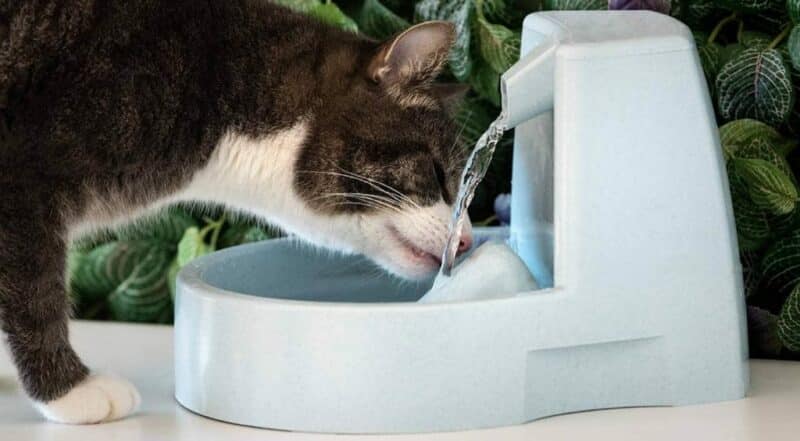
5. Keeps Water Fresh and Cool
Most water fountains function by constantly moving and tumbling water and making it cooler. Like humans, animals prefer their water source to be always fresh, which is challenging to maintain during hot scorching days.
Warm and stale water in water bowls is a perfect environment for bacteria to develop, but keeping water cool and fresh slows down this process.
Cons of Cat Water Fountains
1. More Expensive Than Regular Water Bowls
While cat water fountains have some incredible benefits, you can expect them to be more expensive than regular water bowls. While standard water bowls cost just a few dollars, water fountains can cost even hundreds. You will also need to consider the cost of water filters, which need to be replaced regularly.
2. They Can Be Noisy
Cat water fountains can be quite noisy. The water fountain constantly makes noises due to the water pump and running water, which is pleasant for some people but might be annoying for others. Standard water bowls don’t require a pump and are therefore entirely silent.
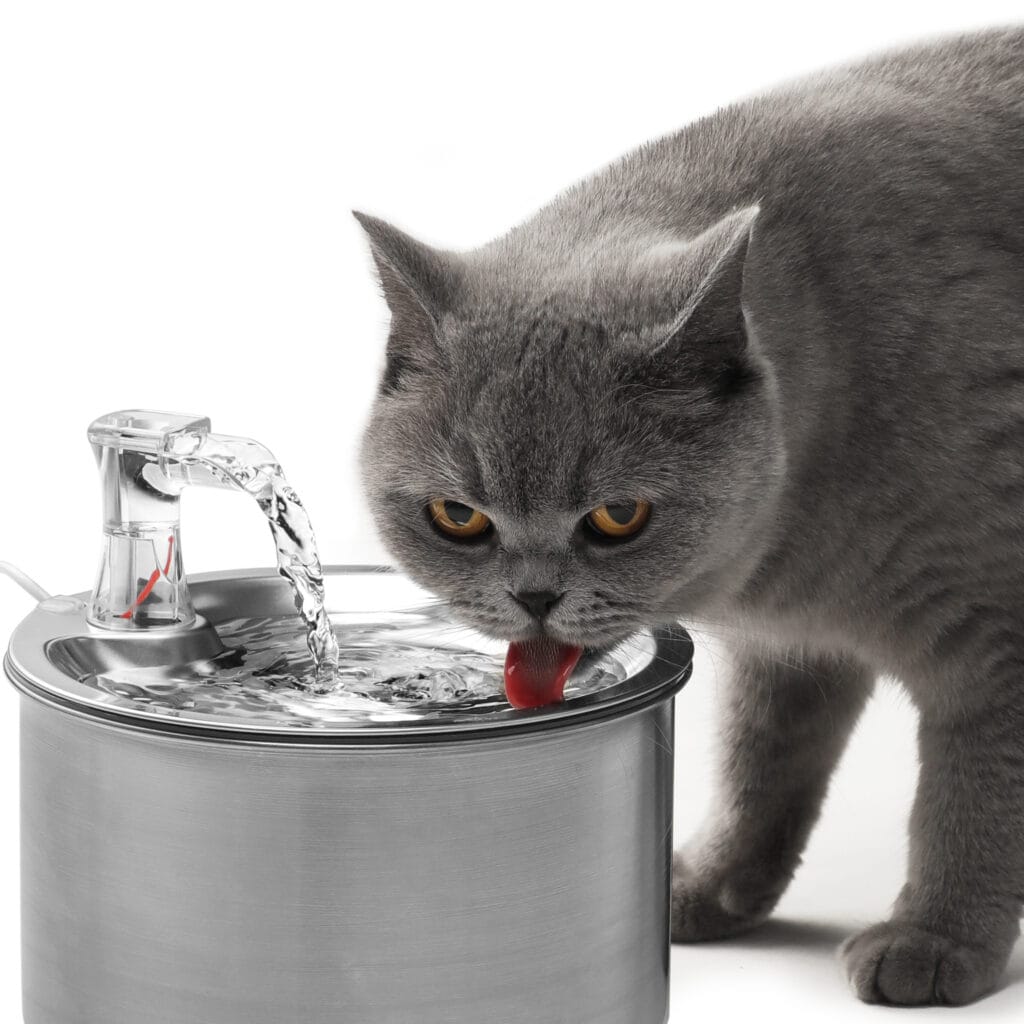
3. Require More Maintenance
Cat water fountains need regular cleaning to ensure grime and bacteria don’t build up over time. This regular cleaning and maintenance might be tiresome because some water fountain models are more difficult to take apart. Also, you’ll need to replace the filters regularly to ensure appropriate function.

How to Choose the Ideal Cat Water Fountain
When choosing an ideal cat water fountain, there are several features you should look for. The first thing to consider is the fountain’s material. While there are various materials available, some of the most durable materials are ceramic and stainless steel. Avoiding plastic is a good idea because plastic can easily scratch, creating more space for harboring bacteria.
Another thing to look for is a cat water fountain with a quiet motor. You will appreciate this feature, especially during the night when the motor sounds might disturb your sleep.
Conclusion
Once reading about all the benefits and drawbacks of cat water fountains, you can decide easily. While there are more benefits to these unique installations than drawbacks, some of the cons might be essential for you to learn. Some pet owners might be looking for a low-cost and low-maintenance solution, which is when a water fountain is not an ideal choice.
However, a water fountain might be your savior if your cat is not drinking from their bowl.
Featured Image Credit: Creative Cat Studio, Shutterstock

